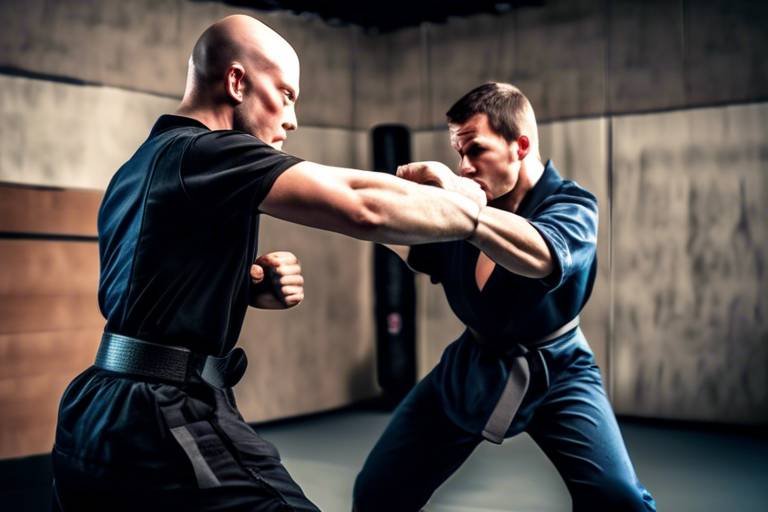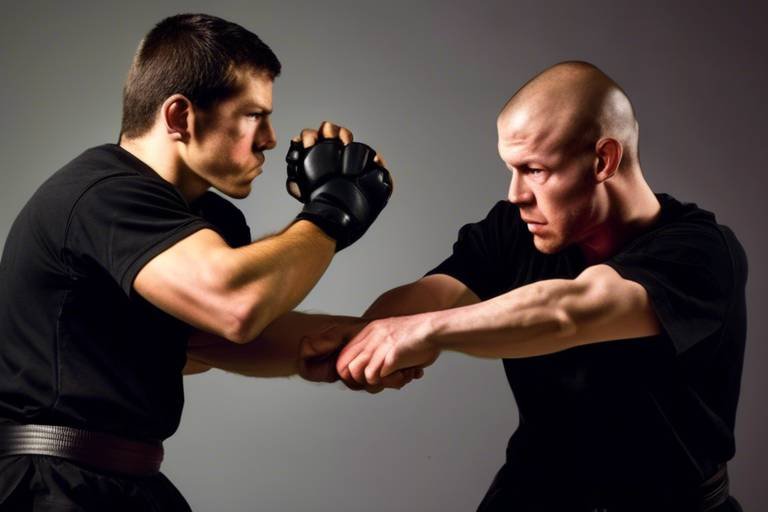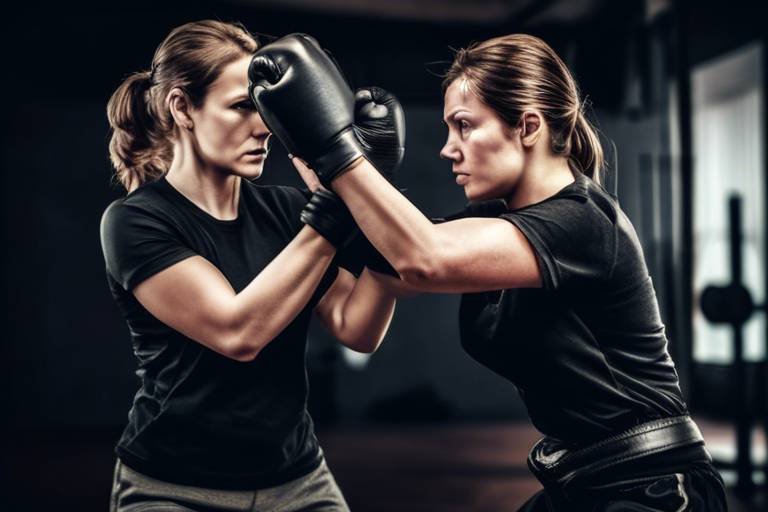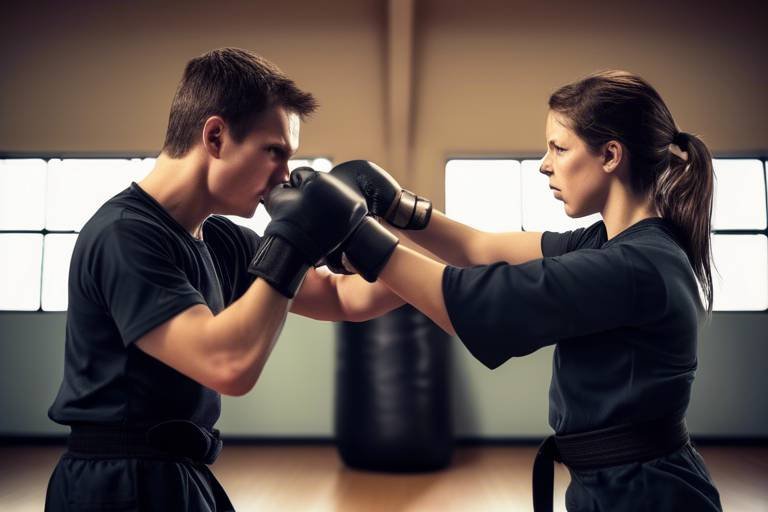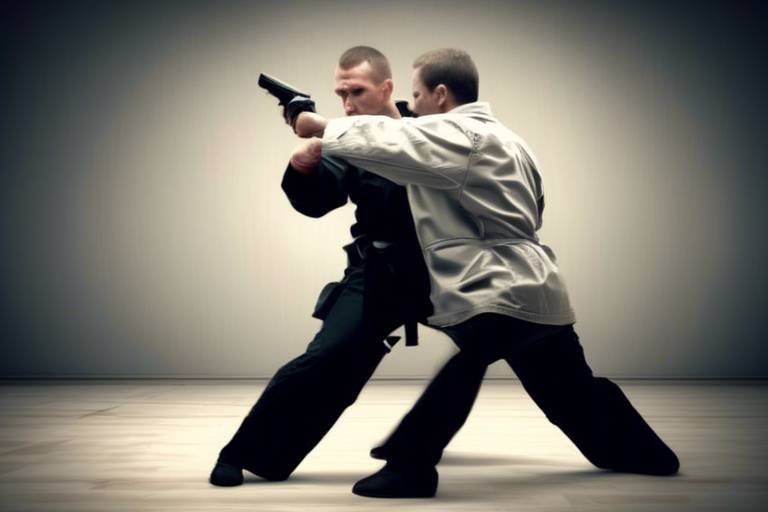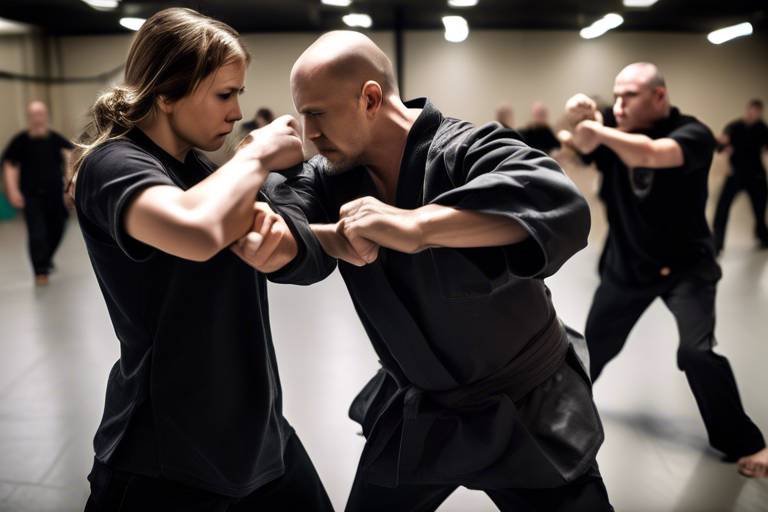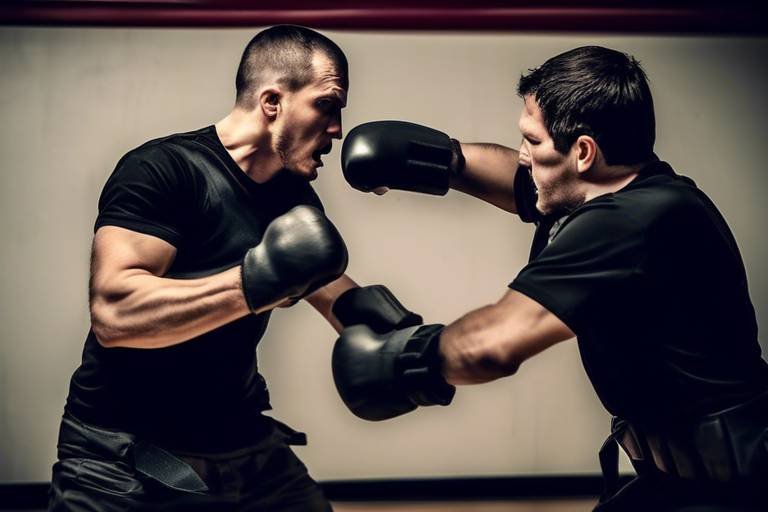Five Counterintuitive Self-Defense Techniques That Actually Work
In a world that often emphasizes brute strength and traditional fighting techniques, it's refreshing to discover that some of the most effective self-defense methods are surprisingly counterintuitive. These techniques not only challenge our preconceived notions about self-defense but also empower individuals to protect themselves in a variety of situations. This article explores five surprising self-defense techniques that defy conventional wisdom, highlighting their effectiveness in real-life situations and offering insights into how to implement them for personal safety. Whether you’re a seasoned martial artist or someone who has never considered self-defense, these techniques can provide you with the tools you need to stay safe.
Using distraction can be a powerful self-defense technique. By diverting an attacker's attention, you create an opportunity to escape or counterattack, turning the tables in a potentially dangerous situation. Imagine you’re approached by someone with ill intentions; instead of panicking, you could throw an object or make a loud noise to catch them off guard. This brief moment of confusion can provide you the crucial seconds needed to flee or defend yourself. The beauty of this technique lies in its simplicity; you don’t need to be a trained fighter to implement it. Just think creatively and act decisively.
Surprising your attacker can shift the dynamics of an encounter. This technique involves unexpected movements or responses that catch the assailant off guard, allowing you to gain control and escape effectively. Think of it as a game of chess—if you can anticipate your opponent's moves and counter them with unpredictability, you have the upper hand. Timing is crucial when employing surprise as a self-defense strategy. Recognizing the right moment to act can enhance the effectiveness of this technique, making your response more impactful and unpredictable.
Timing can be the difference between a successful defense and a missed opportunity. You need to gauge your attacker's movements closely. For instance, if you notice them preparing to strike, that’s your cue to act. A well-timed response can disorient your attacker, creating an opening for you to escape. Practicing quick reactions can significantly improve your ability to surprise an attacker. Regular drills and simulations help build muscle memory, enabling you to respond instinctively in high-pressure situations. The more you practice, the more natural it becomes.
Analyzing real-life encounters where surprise tactics were successfully employed can provide valuable insights and inspiration. For example, there are numerous stories of individuals who have used sudden bursts of energy or unexpected maneuvers to escape dangerous situations. These examples illustrate the practical application of this counterintuitive approach to self-defense. They remind us that fear can be countered with creativity and quick thinking.
When facing a larger or stronger opponent, utilizing surprise and distraction can level the playing field. This strategy focuses on technique and mental agility rather than relying solely on physical strength. Think of a small animal that can outmaneuver a larger predator; it’s all about using your environment and your wits. In self-defense, being smaller can be an advantage if you know how to use your surroundings and your mind to your benefit.
Your surroundings can serve as valuable tools in self-defense. Learning to utilize everyday objects and spaces creatively can enhance your ability to fend off an attacker and escape safely. For instance, consider the items you carry with you daily—keys, bags, or even your phone can be transformed into improvised weapons. Recognizing items in your environment that can be used as improvised weapons is crucial. Understanding how to wield these objects can provide you with an advantage in a confrontation.
Using physical barriers in your environment can help protect you during an attack. Strategically positioning yourself near obstacles can impede an attacker's movement and give you time to escape. For example, if you find yourself cornered in an alley, look for something to put between you and your attacker—a trash can, a bike, or even a wall. These barriers can serve as shields, buying you precious moments to escape or call for help.
Practicing controlled breathing can help maintain composure in stressful situations. This technique allows you to think clearly and react effectively, improving your chances of successfully defending yourself. When adrenaline kicks in, it’s easy to panic and lose control. However, by focusing on your breath, you can ground yourself and regain your composure. This is akin to a pilot in a storm; maintaining calm in chaos is key to navigating through turbulence.
Incorporating mindfulness techniques into your self-defense strategy can enhance focus and awareness. Being present in the moment allows you to assess threats more accurately and respond appropriately. This mental clarity can be your greatest asset when facing unexpected challenges. Developing mental resilience through training can prepare you for high-pressure situations. Regular practice of calming techniques can help you remain composed when facing an unexpected threat.
De-escalation techniques can prevent a situation from becoming violent. Learning how to communicate effectively and diffuse tension can be an invaluable self-defense skill, potentially avoiding confrontation altogether. Think of it as a conversation rather than a confrontation; your goal is to communicate in a way that calms the situation rather than inflames it. Recognizing and responding to body language can help you gauge an attacker's intentions. Being aware of these cues allows you to adjust your approach and potentially de-escalate a situation before it escalates.
Employing verbal de-escalation tactics can help you navigate confrontations with calmness and authority. Practicing assertive communication can empower you to defuse potentially dangerous situations without resorting to physical force. This might involve using a calm tone, maintaining eye contact, and expressing understanding. Remember, the goal is to create a dialogue that diminishes tension and fosters a sense of safety.
Q: Can anyone learn these self-defense techniques?
A: Absolutely! These techniques can be learned by anyone, regardless of physical strength or experience. The key is to practice regularly and stay aware of your surroundings.
Q: How do I know when to use these techniques?
A: Trust your instincts. If you feel threatened or unsafe, it’s important to assess the situation and respond accordingly. Distraction and surprise can often be your best options.
Q: Are these techniques effective in all situations?
A: While these techniques can be effective, it’s important to remember that every situation is unique. Use your judgment and adapt your response based on the circumstances.
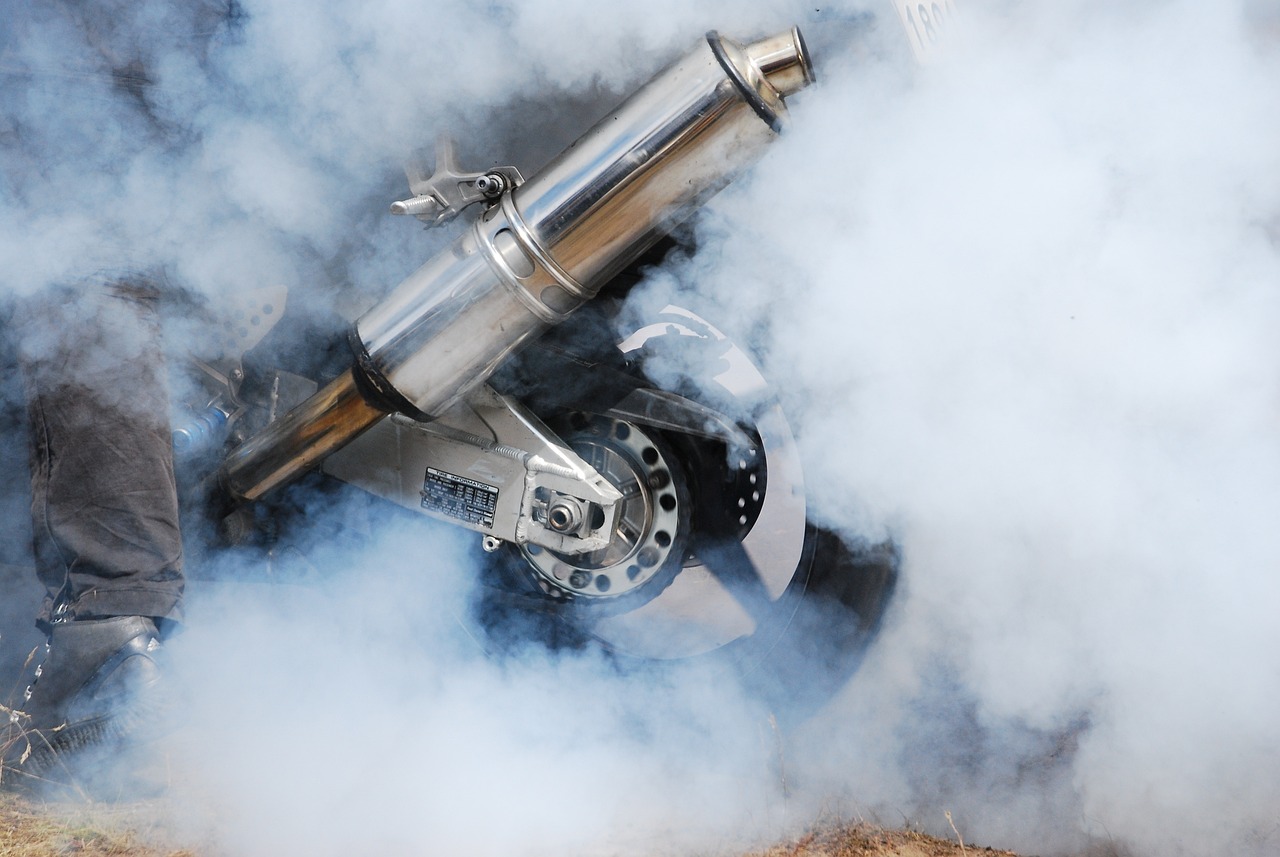
Technique 1: The Power of Distraction
When it comes to self-defense, many people think of physical strength or martial arts skills. However, one of the most effective techniques is often overlooked: distraction. The power of distraction lies in its ability to divert an attacker's attention, creating a critical window for you to escape or counterattack. Imagine you're in a tense situation, and instead of panicking, you suddenly throw a small object or shout something unexpected. This simple act can confuse your attacker, giving you the upper hand.
Distraction works because it plays on the human instinct to focus on immediate threats. When an attacker is caught off guard, their reaction time slows down, and you can seize the moment to get away or strike back. Think of it like a magician performing a trick; the audience's attention is drawn away from the method, allowing the illusion to succeed. In self-defense, your goal is to create a similar illusion, redirecting your attacker's focus long enough for you to act.
To effectively use distraction in a self-defense scenario, consider the following strategies:
- Vocal Distraction: Shouting or making noise can divert attention. A loud, unexpected sound can startle an attacker, giving you a chance to escape.
- Physical Movement: Sudden movements, such as throwing an object or jumping to the side, can catch an assailant off guard.
- Environmental Manipulation: Use your surroundings to create distractions. For example, knocking over a trash can or activating an alarm can draw attention.
Implementing distraction techniques requires practice. You might want to incorporate them into your self-defense training sessions. Role-playing different scenarios can help you develop quick thinking and adaptability. The more you practice, the more instinctive your responses will become.
In real-life situations, the key is to remain calm and focused. If you can maintain your composure while executing a distraction, you’ll be far more effective. Remember, the goal is not to engage in a fight but to create an opportunity to escape safely. By mastering the art of distraction, you can turn a precarious situation into a moment of empowerment.
In conclusion, never underestimate the power of distraction. It’s a technique that can save lives and transform the dynamics of a confrontation. Whether you’re in a parking lot late at night or facing an aggressive individual, remember that a well-timed distraction could be your best defense.
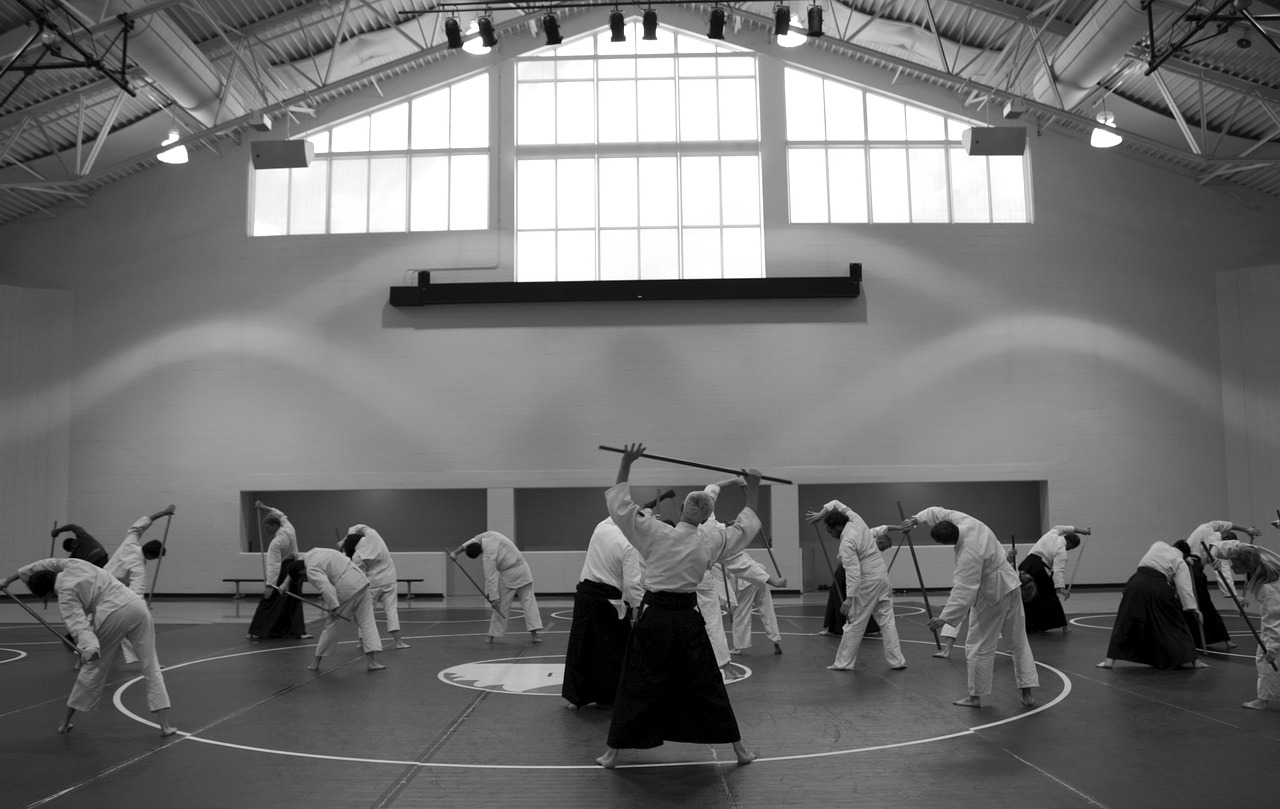
Technique 2: Embrace the Element of Surprise
When it comes to self-defense, one of the most powerful weapons you can wield is the element of surprise. Imagine you're in a tense situation, and instead of reacting predictably, you do something completely unexpected. This can catch your attacker off guard and give you the upper hand. Think of it like a magician pulling a rabbit out of a hat; the unexpected twist can change the entire dynamic of the encounter.
So, how can you effectively embrace this technique? It’s all about your movements and responses. Instead of following conventional patterns, consider incorporating unexpected actions into your self-defense strategy. For example, if someone approaches you aggressively, instead of retreating or standing still, you might suddenly change direction, shout something unexpected, or even throw an object to distract them. These actions can momentarily disorient your attacker, giving you a chance to escape or counterattack.
Timing is everything when it comes to executing a surprise move. You need to be able to recognize the right moment to act. This is where your instincts and awareness come into play. For instance, if you sense an attack is imminent, waiting until the last second to react can amplify the surprise effect. Just like in sports, where the best players anticipate their opponent's moves, being able to read the situation can make all the difference. The more you practice, the better your timing will become.
To truly master the element of surprise, you need to train your body to react quickly. Regular drills can help you build muscle memory, allowing you to respond instinctively in high-pressure situations. Think of it as training for a race; the more you practice, the faster and more efficient you become. You can set up scenarios with friends or even use training dummies to simulate real-life situations. The key is to practice different responses so that when the moment comes, you are ready to spring into action.
Analyzing real-life encounters can provide valuable insights into how surprise tactics have been successfully employed. For example, there have been numerous reports of individuals using everyday items, like a pen or a bag, to create a diversion. These stories illustrate that you don't need to be a martial arts expert to defend yourself; often, it's about using your wits and being creative in the moment. Remember, the goal is to turn the tables and regain control of the situation.
Many people feel intimidated when faced with a larger or stronger opponent. However, embracing the element of surprise can help level the playing field. Instead of relying on brute strength, focus on technique and mental agility. For instance, if someone much larger than you approaches, using a sudden movement to escape or redirect their energy can be far more effective than trying to overpower them. It’s like a small boat navigating through a storm; with the right maneuvers, it can avoid capsizing.
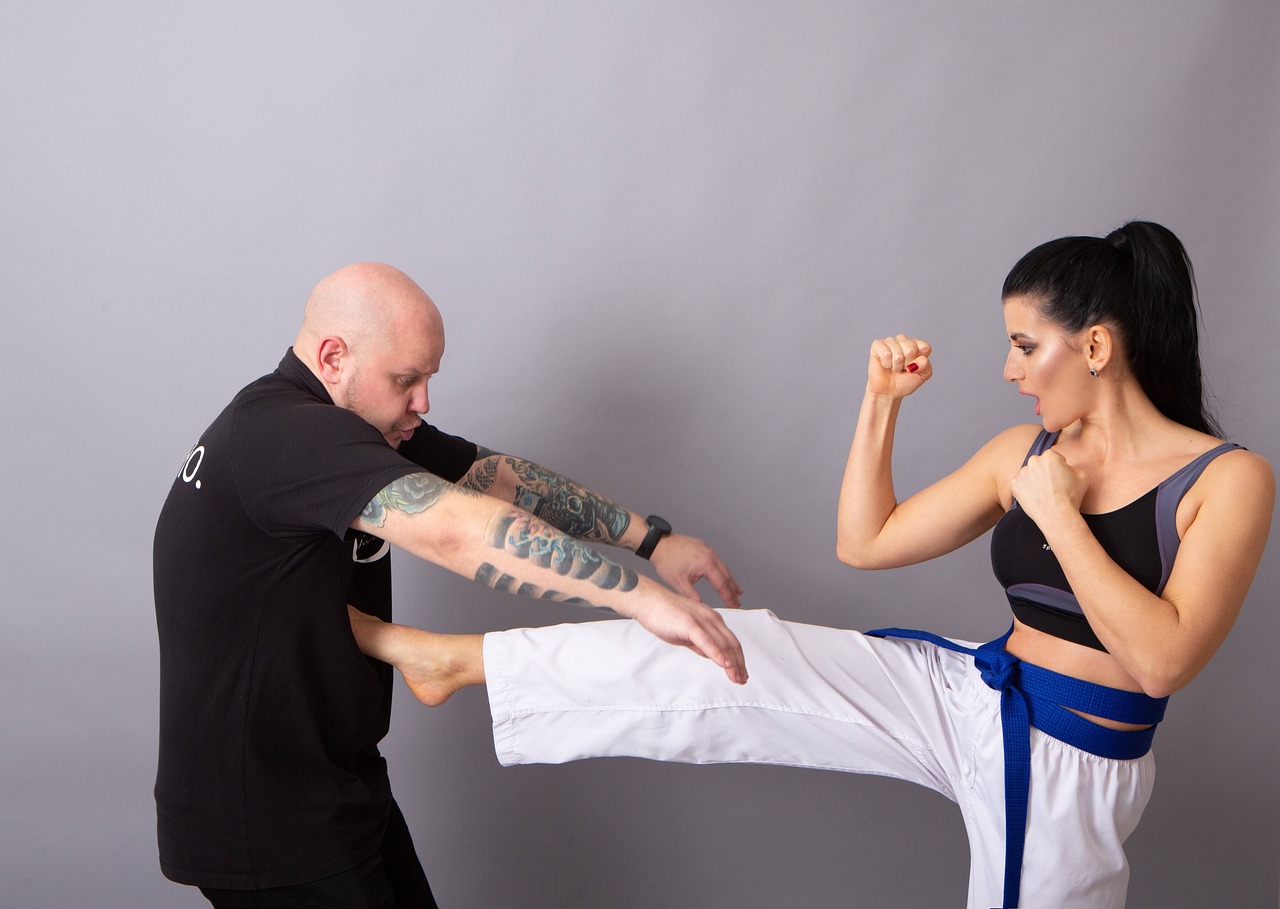
Understanding Timing in Surprise Attacks
Timing is everything when it comes to executing a surprise attack in self-defense. Imagine you're in a high-stress situation, and your heart is racing. The key to turning that tension into a tactical advantage lies in recognizing the right moment to act. A well-timed response can catch your assailant completely off guard, making your actions more effective. But how do you determine that perfect moment?
First, it's essential to observe your attacker's behavior. Are they distracted, or are they overly confident? If they seem relaxed or preoccupied, that’s your golden opportunity to strike. Think of it like a game of chess; you need to anticipate your opponent's moves and react accordingly. A sudden change in your body language or an unexpected action can create just the right amount of confusion, giving you the upper hand.
Moreover, practicing your reactions in a controlled environment can drastically improve your timing. Engaging in drills that simulate real-life scenarios helps build muscle memory. This way, when the moment arises, your body knows exactly what to do without overthinking it. Just like a dancer who has rehearsed their routine countless times, your instincts will kick in, allowing you to respond swiftly and decisively.
Consider the element of surprise not just in your movements but also in your approach. For example, if you're being followed, a sudden change in direction or a loud shout can disorient your pursuer, giving you a chance to escape. Just like a magician who misdirects the audience's attention, you can use these tactics to shift focus away from yourself and create an opening.
Additionally, it’s crucial to remain calm. Panic can cloud your judgment, making it harder to recognize the right moment to act. Practicing mindfulness techniques can help you maintain your composure, allowing you to assess the situation more clearly. Remember, it’s not just about the action itself but also about the mental preparation that leads to effective execution.
In summary, mastering the timing of surprise attacks involves a combination of observation, practice, and mental clarity. By honing these skills, you can turn what might seem like a disadvantage into a powerful self-defense strategy. So, the next time you find yourself in a precarious situation, remember that with the right timing, you have the potential to turn the tables in your favor.
- What should I do if I can't find the right moment to act?
If you feel unsure about when to act, focus on maintaining awareness of your surroundings. Trust your instincts; if something feels off, it’s better to prepare for action than to wait for the perfect moment. - Can practicing surprise techniques help in everyday situations?
Absolutely! Practicing these techniques can enhance your overall confidence and awareness, making you more prepared for unexpected encounters, whether in self-defense or daily life. - How can I train my mind to stay calm during a confrontation?
Engaging in mindfulness exercises, such as deep breathing or visualization, can help. Regular practice will condition your mind to remain calm in stressful situations.
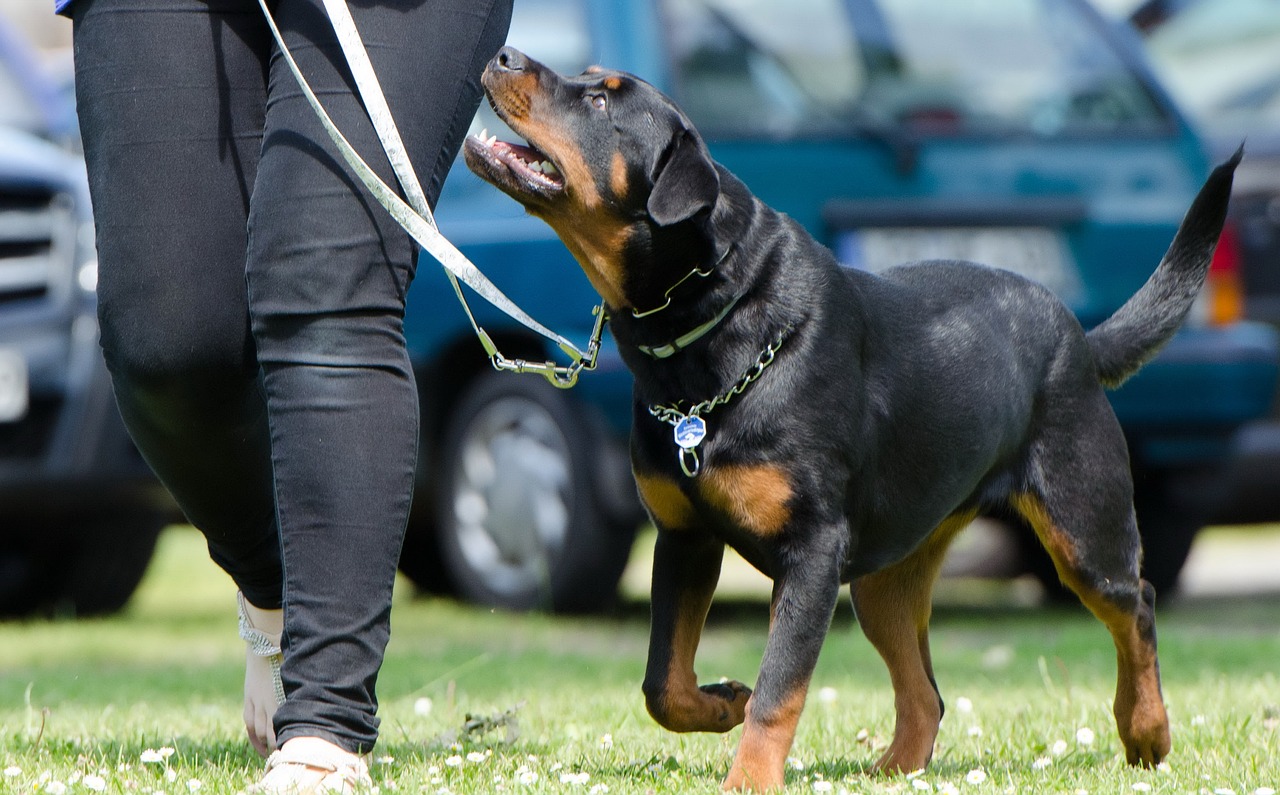
Practicing Quick Reactions
When it comes to self-defense, the ability to react quickly can mean the difference between safety and danger. is not just about physical speed; it's about training your mind and body to respond instinctively in high-pressure situations. Imagine being in a scenario where an attacker approaches you unexpectedly. The first few seconds are crucial, and your response needs to be swift and effective. But how do you cultivate this ability?
One effective way to enhance your reaction time is through consistent training and drills. Engaging in martial arts or self-defense classes can provide structured environments where you can practice quick movements and responses. These classes often incorporate sparring sessions, which simulate real-life encounters and help you develop the muscle memory necessary for rapid reactions. Additionally, practicing with a partner allows you to experience different attack scenarios, making your responses more adaptable.
Another key aspect of improving your reaction time is mental conditioning. Visualization techniques can be incredibly powerful. Picture yourself in a threatening situation and mentally rehearse your response. This mental practice can create neural pathways in your brain that enhance your ability to react swiftly when the need arises. Furthermore, combining physical drills with mental exercises can create a holistic approach to self-defense training.
It’s also beneficial to incorporate reaction-based games and exercises into your routine. For example, you might play reflex-based video games or engage in sports that require quick decision-making and fast movements. These activities not only improve your physical agility but also sharpen your cognitive responses, allowing you to react more effectively in real-life situations. Here are a few activities you could consider:
- Participating in martial arts classes like Krav Maga or Brazilian Jiu-Jitsu
- Engaging in reaction-based sports such as fencing or squash
- Utilizing apps designed to improve reflexes and reaction times
Finally, remember that consistency is key. Just like any other skill, the more you practice, the better you become. Set aside time each week to focus on quick-reaction drills, whether it's through formal training or self-directed practice. With dedication and effort, you'll find yourself becoming more confident in your ability to respond to unexpected threats, ultimately enhancing your overall self-defense capabilities.
Q: How often should I practice quick reactions for self-defense?
A: Ideally, you should practice quick reaction drills at least 2-3 times a week to see significant improvement. Consistency is crucial.
Q: Can I practice quick reactions at home?
A: Yes! There are many drills and exercises you can do at home, such as shadowboxing, reaction-based games, or even practicing techniques with a family member or friend.
Q: What if I don’t have access to a martial arts class?
A: You can still improve your quick reactions through online tutorials, self-defense books, and practicing with a partner. There are also many online communities where you can share tips and experiences.
Q: How does mental conditioning improve my reaction time?
A: Mental conditioning, such as visualization and scenario rehearsal, prepares your brain to respond more quickly and effectively during real-life situations, enhancing your overall reaction time.

Real-Life Examples of Surprise Techniques
When it comes to self-defense, the element of surprise can be a game changer. Many people might think that the best way to defend themselves is through brute force or advanced martial arts techniques, but sometimes, a simple unexpected action can turn the tide of a confrontation. Let’s explore a few real-life scenarios where surprise techniques have proven effective.
One notable example comes from a woman named Sarah, who found herself cornered in a parking lot. As an assailant approached her with aggressive intent, she remembered her training about using distraction. Instead of panicking, she quickly grabbed her phone and pretended to be on a call. This sudden act diverted the attacker's attention, allowing her to make a loud noise and draw attention from nearby pedestrians. The assailant, startled by her unexpected behavior, hesitated long enough for Sarah to escape.
Another powerful instance involves a man named Mike, who was confronted by a larger individual in a bar. Instead of engaging directly, Mike utilized the element of surprise by abruptly dropping to the ground and rolling away. This unexpected movement not only confused his attacker but also allowed Mike to get to his feet and create distance between them. By the time the assailant realized what had happened, Mike was already out of reach, demonstrating how quick thinking and surprise can be more effective than physical strength.
Additionally, in a self-defense workshop, participants practiced a technique called "the unexpected shout." This involves yelling a specific phrase or word when attacked. During the training, one participant, Jessica, successfully startled her training partner by suddenly shouting “Fire!” This caught her partner off guard, breaking their focus and giving Jessica the chance to escape. This example illustrates how a simple vocal distraction can create an opportunity for evasion.
These real-life examples highlight that employing surprise techniques in self-defense can be incredibly effective. By understanding and anticipating the reactions of potential attackers, individuals can leverage unexpected actions to create opportunities for escape or counteraction. Whether it’s through distraction, sudden movements, or vocal outbursts, the key takeaway is that sometimes, the most unconventional methods can yield the best results.
- What should I do if I am attacked?
Stay calm and assess the situation. Use distraction or surprise techniques to create an opportunity to escape. - Can I really defend myself without martial arts training?
Absolutely! Techniques like distraction and using your environment can be effective regardless of your training level. - How can I practice these techniques?
Consider enrolling in self-defense classes or practicing with friends to build your skills and confidence. - Are there any legal implications for using self-defense?
Yes, laws vary by location. It’s important to understand your local laws regarding self-defense.

Countering Size and Strength Disadvantages
When it comes to self-defense, many people feel intimidated by the prospect of facing a larger or stronger opponent. However, it's essential to understand that size and strength aren't the only factors that determine the outcome of a confrontation. In fact, utilizing surprise and distraction can effectively level the playing field, allowing you to turn the tables on an attacker who may seem physically dominant.
One of the most critical aspects of countering size and strength disadvantages is to focus on technique and mental agility rather than brute force. Consider this: a smaller, quicker person can outmaneuver a larger opponent by using strategic movements. For instance, if you find yourself in a threatening situation, you could:
- Utilize your speed: Quick footwork can help you evade an attack, allowing you to create distance and escape.
- Target vulnerable areas: Striking sensitive spots like the eyes, throat, or groin can incapacitate a larger attacker, giving you a chance to flee.
- Employ leverage: Techniques from martial arts like judo or Brazilian jiu-jitsu emphasize using an opponent's weight against them, allowing you to gain control without relying on strength.
Moreover, maintaining a calm and focused mindset is crucial. When faced with a larger adversary, panic can lead to poor decision-making. Instead, practicing controlled breathing can help you stay centered and assess the situation more clearly. Remember, the goal is to create an opening for escape rather than engage in a prolonged struggle.
Real-life examples abound where individuals have successfully defended themselves against larger attackers by employing these strategies. Take, for instance, a woman who found herself cornered by a much larger assailant. Instead of freezing in fear, she quickly assessed her surroundings, grabbed her keys, and distracted her attacker by throwing them in one direction while she made her escape in the other. This simple yet effective use of distraction not only surprised her assailant but also provided her with a critical opportunity to flee.
In conclusion, when facing a larger or stronger opponent, remember that your greatest assets are your mind and your ability to think creatively. By focusing on techniques that leverage your agility and surprise, you can effectively counteract size and strength disadvantages. With practice and preparation, you can enhance your self-defense skills and feel more confident in your ability to protect yourself.
Q: What should I do if I can't escape a confrontation?
A: If escape is not an option, focus on defending yourself by targeting vulnerable areas and using your environment to your advantage. Remember to stay calm and think strategically.
Q: How can I practice these techniques?
A: Consider enrolling in a self-defense class that emphasizes practical techniques, or practice with a friend in a controlled environment. Regular drills can help reinforce your skills.
Q: Is it legal to defend myself?
A: Self-defense laws vary by location. It's essential to understand your local laws regarding self-defense to ensure that you act within legal boundaries.
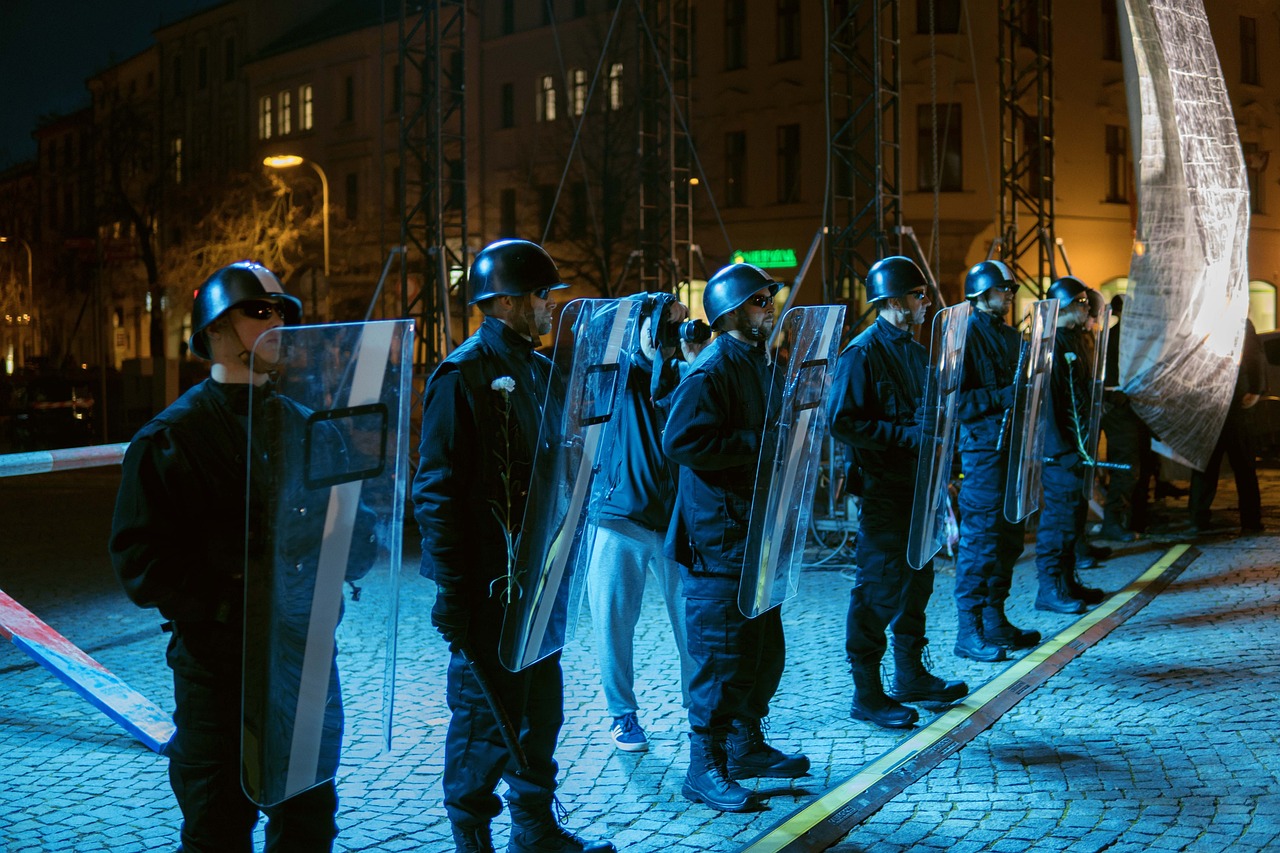
Technique 3: Use Your Environment
When it comes to self-defense, one of the most underrated resources at your disposal is your environment. The world around you is not just a backdrop; it can be a powerful ally in a dangerous situation. Imagine walking down the street and suddenly finding yourself confronted by an attacker. Instead of feeling helpless, you can leverage your surroundings to create opportunities for escape or defense. This technique emphasizes the importance of being aware of your environment and using it to your advantage.
First and foremost, identifying potential weapons in your environment is crucial. Everyday items can be transformed into effective tools for self-defense. For instance, your keys can be gripped between your fingers to create a makeshift weapon, or a pen can be used to jab an assailant in a vulnerable area. Even a simple bag can serve as a barrier or distraction. Here are some common items that can be used in a pinch:
- Keys: Sharp edges can be used to inflict pain.
- Umbrella: A sturdy umbrella can be wielded as a defensive tool.
- Backpack: Can be used to shield yourself or throw off an attacker.
- Phone: Not only can it call for help, but it can also be used to strike.
In addition to recognizing potential weapons, it’s essential to think about how to create barriers during an attack. Positioning yourself near obstacles—like cars, benches, or walls—can impede an attacker's movement, giving you precious seconds to escape. For example, if you find yourself cornered, moving behind a parked car can create a physical barrier that may force the attacker to reposition themselves. This small delay can make all the difference, allowing you to make a getaway or prepare a counter-move.
Moreover, understanding the layout of your surroundings can enhance your chances of survival. Familiarize yourself with escape routes in places you frequent, whether it’s your neighborhood, workplace, or local park. Knowing where to run can be as vital as having a physical defense mechanism. In high-stress situations, your brain may not function optimally, so having a plan can help you react instinctively.
In conclusion, using your environment effectively in self-defense isn’t just about being resourceful; it’s about being strategic. By recognizing the tools available to you and understanding how to manipulate your surroundings to your advantage, you can significantly increase your chances of escaping a dangerous situation. Remember, the goal is not to engage in a fight but to create opportunities for escape and safety.

Identifying Potential Weapons
When it comes to self-defense, one of the most critical skills you can develop is the ability to identify potential weapons in your environment. This isn’t just about carrying a self-defense tool; it’s about recognizing that everyday objects can serve as effective means of protection. Imagine walking down the street and suddenly finding yourself in a threatening situation. Your first instinct might be to panic, but by training yourself to see the world through a self-defense lens, you can turn ordinary items into extraordinary shields.
Think about it: your keys can be more than just a way to unlock your door. Gripping them firmly between your fingers can create a makeshift weapon. Similarly, a pen can serve as a powerful tool when used with intention. In fact, many people underestimate the effectiveness of small items like these in a self-defense scenario. Other potential weapons include:
- Umbrellas: A sturdy umbrella can be used to poke or jab at an assailant, and its long handle can keep an attacker at bay.
- Backpacks: A filled backpack can act as a shield, absorbing blows and giving you a moment to escape.
- Water bottles: A hard, filled water bottle can be swung or thrown to distract or deter an attacker.
- Clothing: Items like belts or jackets can be utilized to entangle or distract an opponent.
However, it’s not just about having these items on hand; it’s about understanding how to wield them effectively. Training in specific techniques can make a world of difference. For instance, practicing how to use your keys or a pen can help you react instinctively when you need to defend yourself. Moreover, situational awareness is key. Always be conscious of your surroundings and the objects within them. The more you practice identifying potential weapons, the better prepared you will be in a crisis.
In addition to recognizing these items, consider how you might use your environment to your advantage. The layout of a space can dictate your options. For example, if you find yourself near a table, you could use it as a barrier to impede an attacker’s approach. The ability to think on your feet and use what’s around you can be the difference between safety and danger.

Creating Barriers for Defense
When it comes to self-defense, one of the most underappreciated strategies is the use of environmental barriers. Think of your surroundings as a shield—an ally in your quest for safety. By positioning yourself strategically, you can create physical barriers that impede an attacker's movement, giving you precious moments to escape or react. Whether it's a table, a wall, or even a group of people, these barriers can be your best friend in a tense situation.
Imagine standing in a crowded café. The tables and chairs are not just furniture; they can serve as obstacles to an approaching threat. By placing a table between you and an attacker, you not only create a physical distance but also a psychological barrier. This simple act can confuse and delay an assailant, providing you with the opportunity to escape or call for help. The key is to be aware of your surroundings at all times and to recognize potential barriers that can be leveraged in your favor.
Additionally, it's essential to think about the types of barriers you can use. Here are some examples:
- Furniture: Tables, chairs, and even benches can obstruct an attacker’s path.
- Walls: Positioning yourself against a wall can limit an attacker's approach.
- Groups of People: Moving towards a crowd can provide safety in numbers.
However, it's not just about finding a barrier; it's about using it effectively. For instance, if you're near a staircase, you can use the steps to your advantage. By moving to a higher or lower level, you can create a significant distance from your attacker, making it harder for them to reach you. Remember, the goal is to create as many obstacles as possible between you and the threat.
In conclusion, incorporating environmental barriers into your self-defense strategy can dramatically enhance your ability to protect yourself. By training your mind to recognize and utilize these barriers, you can turn an everyday environment into a fortress, giving you the upper hand in a potentially dangerous situation.
Q1: How can I identify barriers in my environment?
A1: Look for objects that can obstruct an attacker's path, such as furniture, walls, or even people. Always be aware of your surroundings and think creatively about how to use them to your advantage.
Q2: What should I do if there are no barriers around me?
A2: If you find yourself in an open space, your best option is to create distance. Use your voice to attract attention and look for ways to escape rather than confront the attacker directly.
Q3: Can practicing with barriers improve my self-defense skills?
A3: Absolutely! Practicing self-defense techniques with various barriers can help you develop quick thinking and adaptability, which are crucial in real-life situations.

Technique 4: Controlled Breathing for Calmness
When it comes to self-defense, maintaining a clear mind is just as important as physical techniques. One of the most effective ways to achieve this state of calmness is through controlled breathing. This technique not only helps you stay composed during a stressful situation but also enables you to think clearly and react effectively. Imagine being in a high-pressure scenario where your heart races and panic sets in. Now, picture yourself taking a deep breath, focusing on your inhalation and exhalation, and suddenly feeling more grounded and capable of handling the situation. This is the power of controlled breathing.
Practicing controlled breathing techniques can transform your response to fear and anxiety. When you find yourself in a tense situation, your body naturally goes into fight-or-flight mode, which can cloud your judgment. By consciously regulating your breath, you can counteract this instinctive reaction. Here are a few techniques to practice:
- Deep Breathing: Inhale deeply through your nose, allowing your abdomen to rise, and then exhale slowly through your mouth. Repeat this process several times to lower your heart rate.
- Box Breathing: Inhale for a count of four, hold your breath for four, exhale for four, and hold again for four. This rhythmic pattern can help stabilize your emotions.
- 4-7-8 Breathing: Inhale for four counts, hold for seven, and exhale for eight. This technique is particularly effective for promoting relaxation.
By incorporating these breathing techniques into your daily routine, you can build a habit that will serve you well in moments of crisis. But it’s not just about the mechanics of breathing; it’s also about mindfulness. Mindfulness in self-defense involves being present in the moment, which allows you to assess potential threats more accurately. When you practice mindfulness alongside controlled breathing, you create a powerful combination that enhances your situational awareness.
Moreover, training your mind to stay calm under pressure is crucial. Just like athletes train their bodies for peak performance, you can train your mind through regular practice of calming techniques. This could include meditation, yoga, or even simple visualization exercises where you imagine yourself handling a stressful situation with grace and control. The more you practice, the more instinctive these responses become, allowing you to react with confidence when it matters most.
In conclusion, controlled breathing is not just a technique; it’s a vital tool in your self-defense arsenal. By mastering this skill, you empower yourself to face unexpected threats with a calm demeanor and a clear mind. Remember, in the chaos of an attack, your ability to breathe and think clearly can be the difference between panic and effective action.
Q1: How often should I practice controlled breathing techniques?
A: It's beneficial to practice these techniques daily, even for just a few minutes, to build muscle memory and resilience in high-stress situations.
Q2: Can controlled breathing help in situations other than self-defense?
A: Absolutely! Controlled breathing is effective for managing anxiety, improving focus, and enhancing overall well-being in various situations.
Q3: Are there specific breathing exercises recommended for beginners?
A: Yes! Starting with simple deep breathing and gradually incorporating techniques like box breathing can be very effective for beginners.

Benefits of Mindfulness in Self-Defense
Mindfulness isn't just a trendy buzzword; it's a powerful tool that can significantly enhance your self-defense capabilities. When you're faced with a threatening situation, your mind can easily spiral into panic, leading to poor decision-making. However, practicing mindfulness helps you maintain a clear head, allowing you to assess the situation more accurately. Imagine being in a high-stress environment where your heart races, and your thoughts cloud your judgment. Now, picture being able to take a step back, breathe deeply, and observe what's happening around you. This is the essence of mindfulness, and it can be a game-changer in self-defense scenarios.
One of the key benefits of mindfulness is its ability to improve focus. When you're fully present, you're less likely to be distracted by external noise or internal fears. This heightened awareness enables you to pick up on subtle cues that might indicate an impending threat. For instance, noticing someone's body language or facial expressions can provide critical information that allows you to respond appropriately. As you practice mindfulness, you train your brain to filter out distractions, honing your ability to concentrate on the task at hand—your safety.
Moreover, mindfulness encourages emotional regulation. In a confrontation, it's easy to let fear or anger dictate your actions. By cultivating mindfulness, you learn to recognize these emotions without letting them control you. This means you can respond to a threat with a level head, rather than reacting impulsively. The ability to stay calm under pressure is invaluable, as it allows you to think strategically about your next move. Whether that means escaping, de-escalating the situation, or preparing to defend yourself, a calm mind is your best ally.
Furthermore, mindfulness can enhance your physical performance. When you're in a state of flow—fully engaged and focused—your body responds more effectively. This is particularly important in self-defense, where quick reflexes and precise movements can make all the difference. By incorporating mindfulness practices such as meditation or breathing exercises into your routine, you can improve your reaction times and overall physical awareness. Imagine being able to execute a defensive maneuver not just with your body, but with your mind fully engaged and responsive.
Lastly, mindfulness fosters resilience. Life is unpredictable, and encounters can escalate quickly. By training yourself to remain present and composed, you build mental toughness. This resilience not only prepares you for physical confrontations but also equips you to handle life's challenges with greater ease. The benefits of mindfulness extend beyond self-defense, permeating various aspects of your life, from personal relationships to professional environments.
In summary, the integration of mindfulness into your self-defense strategy offers a multitude of benefits:
- Improved Focus: Enhances your ability to notice crucial details.
- Emotional Regulation: Helps you manage fear and anger effectively.
- Enhanced Physical Performance: Increases reaction times and awareness.
- Resilience Building: Prepares you for unexpected challenges.
By embracing mindfulness, you're not just preparing for a physical confrontation; you're equipping yourself with a holistic approach to personal safety that empowers you in every aspect of your life.
Q1: What is mindfulness?
Mindfulness is the practice of being fully present and engaged in the current moment, without judgment. It involves paying attention to your thoughts, feelings, and surroundings.
Q2: How can mindfulness help in self-defense?
Mindfulness can improve focus, emotional regulation, and physical performance, all of which are crucial in self-defense situations. It helps you stay calm and make better decisions under pressure.
Q3: Do I need to meditate to practice mindfulness?
While meditation is a common way to develop mindfulness, you can practice it in everyday activities. Simple breathing exercises or paying close attention to your surroundings can enhance your mindfulness.
Q4: Can mindfulness be learned?
Absolutely! Mindfulness is a skill that can be developed over time with practice. There are many resources available, including classes, apps, and books, to help you get started.

Training Your Mind to Stay Calm
This article explores five surprising self-defense techniques that defy conventional wisdom, highlighting their effectiveness in real-life situations and offering insights into how to implement them for personal safety.
Using distraction can be a powerful self-defense technique. By diverting an attacker's attention, you create an opportunity to escape or counterattack, turning the tables in a potentially dangerous situation.
Surprising your attacker can shift the dynamics of an encounter. This technique involves unexpected movements or responses that catch the assailant off guard, allowing you to gain control and escape effectively.
Timing is crucial when employing surprise as a self-defense strategy. Recognizing the right moment to act can enhance the effectiveness of this technique, making your response more impactful and unpredictable.
Training to react quickly can significantly improve your ability to surprise an attacker. Regular drills and simulations help build muscle memory, enabling you to respond instinctively in high-pressure situations.
Analyzing real-life encounters where surprise tactics were successfully employed can provide valuable insights and inspiration. These examples illustrate the practical application of this counterintuitive approach to self-defense.
When facing a larger or stronger opponent, utilizing surprise and distraction can level the playing field. This strategy focuses on technique and mental agility rather than relying solely on physical strength.
Your surroundings can serve as valuable tools in self-defense. Learning to utilize everyday objects and spaces creatively can enhance your ability to fend off an attacker and escape safely.
Recognizing items in your environment that can be used as improvised weapons is crucial. From keys to bags, understanding how to wield these objects can provide you with an advantage in a confrontation.
Using physical barriers in your environment can help protect you during an attack. Strategically positioning yourself near obstacles can impede an attacker's movement and give you time to escape.
Practicing controlled breathing can help maintain composure in stressful situations. This technique allows you to think clearly and react effectively, improving your chances of successfully defending yourself.
Incorporating mindfulness techniques into your self-defense strategy can enhance focus and awareness. Being present in the moment allows you to assess threats more accurately and respond appropriately.
Training your mind to stay calm in the face of danger is like building a mental fortress; it requires practice, patience, and persistence. When the adrenaline kicks in, our instincts often drive us to panic, which can cloud our judgment. However, by developing techniques to keep your mind centered, you can significantly improve your ability to respond effectively. One effective method is to engage in mindfulness meditation. This practice encourages you to focus on your breathing and the present moment, helping you to cultivate a sense of peace even in chaotic situations.
Additionally, consider employing visualization techniques. Imagine yourself in a threatening scenario and practice how you would react calmly and effectively. This mental rehearsal can prepare you for real-life encounters, making your responses more instinctive. You can also use affirmations to reinforce your calm mindset. Phrases like "I am in control" or "I can handle this" can be powerful reminders to stay composed under pressure.
Finally, remember that physical exercise plays a crucial role in mental resilience. Regular workouts not only improve your physical strength but also release endorphins that reduce stress and anxiety. By combining these practices, you’ll be better equipped to maintain your calm during high-stress situations, allowing you to think clearly and act decisively.
De-escalation techniques can prevent a situation from becoming violent. Learning how to communicate effectively and diffuse tension can be an invaluable self-defense skill, potentially avoiding confrontation altogether.
Recognizing and responding to body language can help you gauge an attacker's intentions. Being aware of these cues allows you to adjust your approach and potentially de-escalate a situation before it escalates.
Employing verbal de-escalation tactics can help you navigate confrontations with calmness and authority. Practicing assertive communication can empower you to defuse potentially dangerous situations without resorting to physical force.
- What is the most effective self-defense technique? The effectiveness of a self-defense technique often depends on the situation. However, techniques that incorporate distraction and surprise tend to yield positive results.
- How can I practice self-defense techniques safely? Consider enrolling in a self-defense class or workshop where you can practice under the guidance of a trained instructor.
- Is physical strength necessary for self-defense? No, many self-defense techniques rely on strategy, mental agility, and the element of surprise rather than physical strength alone.

Technique 5: Engage in De-Escalation
In a world where tensions can escalate in the blink of an eye, mastering the art of de-escalation can be a game changer for your personal safety. This technique revolves around the idea that not every confrontation needs to end in violence. Instead, by learning how to communicate effectively and diffuse tension, you can often avoid physical altercations altogether. Imagine walking into a heated situation and, instead of throwing fuel on the fire, you're the one who cools things down. Sounds empowering, right?
One of the first steps in de-escalation is understanding body language cues. It's like being a detective in a high-stakes scenario; you need to read the room. For instance, if an individual is clenching their fists or avoiding eye contact, these could be signs of escalating aggression. By recognizing these signals, you can adjust your approach and potentially steer the conversation towards a more peaceful resolution. It’s all about being aware of your own body language too; keeping your posture open and non-threatening can make a world of difference.
Next, let's talk about effective communication strategies. The way you speak can either escalate or de-escalate a situation. Use a calm, steady voice and avoid aggressive language. Instead of saying, “You need to stop!” try something like, “Let’s take a moment to talk about this.” This subtle shift can create an environment where the other person feels heard rather than attacked. Here’s a quick breakdown of some phrases that can help:
| Escalating Phrase | De-Escalating Alternative |
|---|---|
| “You’re wrong!” | “I see your point, but let’s consider this…” |
| “Calm down!” | “I understand this is frustrating. Let’s take a breath.” |
| “I don’t care!” | “I want to understand your feelings better.” |
Additionally, practicing active listening can further enhance your de-escalation skills. This means not just hearing the words being said, but really understanding the emotions behind them. Nodding, maintaining eye contact, and occasionally summarizing what the other person has said can show that you are engaged and care about resolving the issue. This can often lead to a significant reduction in hostility.
Finally, remember that de-escalation isn’t about winning an argument; it’s about finding a resolution that leaves everyone feeling respected. It might feel counterintuitive, especially in a heated moment, but taking a step back and opting for dialogue can be the most powerful self-defense technique of all. In the end, you might find that the best way to defend yourself is not through physical prowess, but through the strength of your words and your ability to connect with others on a human level.
- What is de-escalation? De-escalation is a technique used to reduce the intensity of a conflict or potential confrontation through effective communication and understanding.
- How can I practice de-escalation? You can practice by role-playing scenarios, focusing on your body language, and using calming phrases in everyday conversations.
- Is de-escalation always effective? While not every situation can be de-escalated, employing these techniques significantly increases your chances of avoiding violence.
- Can I learn de-escalation techniques online? Yes, many resources and courses are available online that can teach you effective de-escalation strategies.
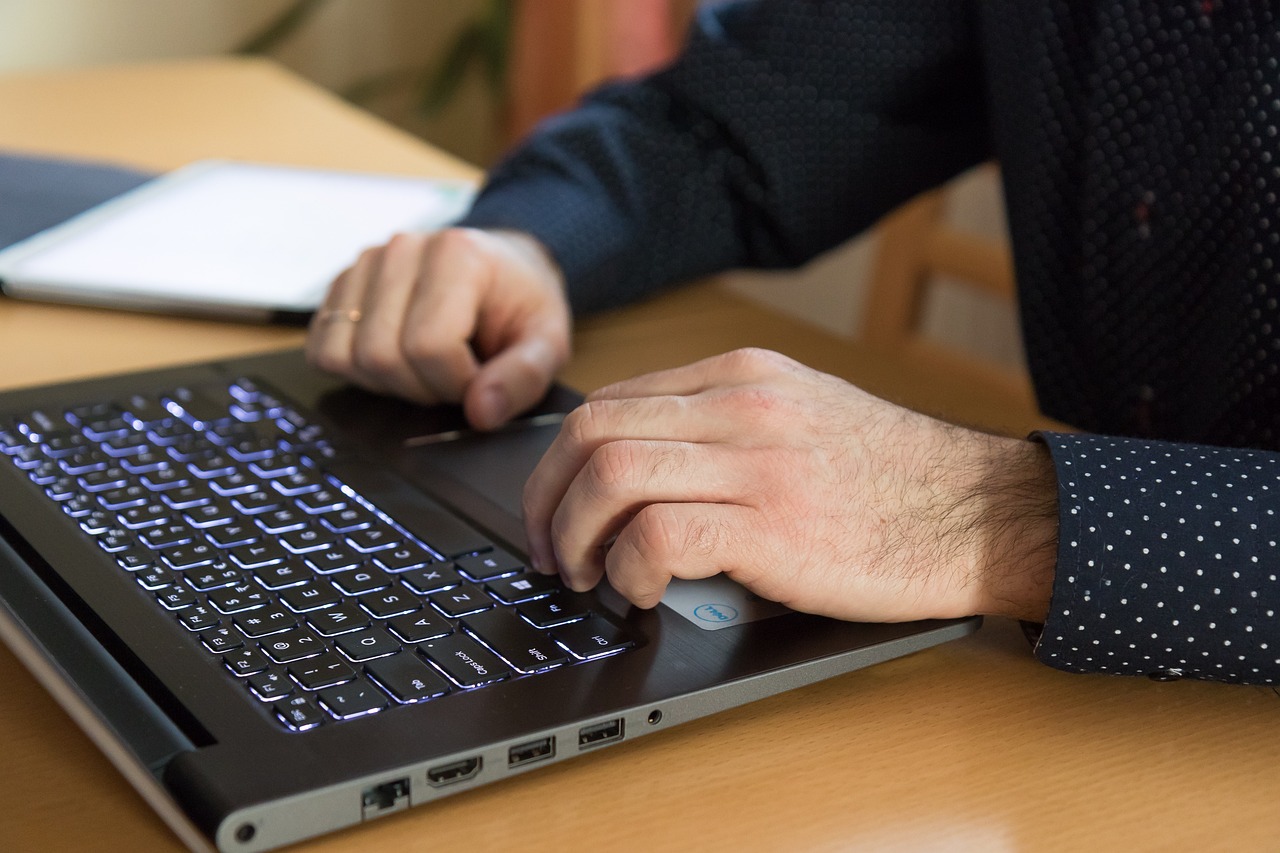
Understanding Body Language Cues
Understanding body language cues is like having a secret decoder ring for human interaction. When it comes to self-defense, being able to read an attacker's body language can provide you with critical insights into their intentions. For instance, subtle signals such as clenched fists, tense shoulders, or an aggressive stance can indicate that someone is preparing to escalate a confrontation. On the flip side, open palms and relaxed posture can suggest that a person is not a threat, allowing you to navigate the situation more safely.
It's essential to recognize that body language is often more telling than words. When an individual feels threatened, their body will often betray their emotions before they even utter a word. For example, if someone approaches you with a furrowed brow and swift movements, it's likely that they are agitated or aggressive. Conversely, if they maintain a safe distance and avoid direct eye contact, they may be uncertain or hesitant. Being aware of these cues can help you determine whether to engage or retreat.
Moreover, it's not just about interpreting the attacker's body language; it's also about managing your own. How you present yourself can influence the dynamics of the encounter. Standing tall with your shoulders back can project confidence, while a slouched posture may signal weakness. In a tense situation, adopting a stance that conveys calmness and assertiveness can sometimes de-escalate the tension before it even begins. Remember, your body language communicates just as loudly as your words.
To further illustrate the importance of body language in self-defense, consider the following table that outlines common cues and their potential meanings:
| Body Language Cue | Potential Meaning |
|---|---|
| Clenched Fists | Preparation for aggression |
| Aggressive Stance | Ready to attack |
| Open Palms | Non-threatening behavior |
| Averted Gaze | Uncertainty or fear |
| Stepping Back | Desire to avoid confrontation |
In summary, becoming adept at reading body language cues can significantly enhance your self-defense capabilities. It allows you to make informed decisions in high-pressure situations, potentially preventing violence before it occurs. So, the next time you find yourself in a tense interaction, take a moment to observe the body language at play. You might just find that the key to your safety lies in the unspoken signals around you.
- How can I improve my ability to read body language? Regularly observing people's interactions in various settings can help you become more attuned to non-verbal cues. Additionally, studying resources on body language can provide valuable insights.
- What should I do if I notice threatening body language? Trust your instincts. If you feel threatened, it's often best to create distance and remove yourself from the situation if possible. Always prioritize your safety.
- Can body language be misinterpreted? Yes, body language can vary greatly between cultures and individuals. It's important to consider the context and other verbal cues before jumping to conclusions.

Effective Communication Strategies
When it comes to self-defense, the ability to communicate effectively can be just as crucial as physical skills. Imagine being in a tense situation where an aggressor is approaching you. Instead of resorting to violence, what if you could use your words to defuse the situation? This is where effective communication strategies come into play. It’s not just about what you say, but how you say it. Your tone, body language, and choice of words can significantly influence the outcome of a confrontation.
One powerful technique is to maintain a calm and assertive demeanor. When you project confidence, it can disarm an attacker. Consider this: if you approach a situation with fear or hesitation, it may embolden the aggressor. Instead, try to stand tall, make eye contact, and speak clearly. You might say something like, “I don’t want any trouble. Let’s just walk away.” This straightforward approach can sometimes catch the aggressor off guard and make them reconsider their intentions.
Additionally, understanding the importance of active listening cannot be overstated. When you listen to what the other person is saying, you can better gauge their emotions and intentions. Responding with empathy can sometimes de-escalate a situation. For example, if someone is angry, acknowledging their feelings with phrases like, “I understand you’re upset,” can create a connection and reduce hostility. It shows that you are not just dismissing their feelings, which can lead to a more constructive dialogue.
Another effective strategy is to use open-ended questions. These types of questions encourage dialogue rather than confrontation. Instead of making accusations or assumptions, you might ask, “What’s bothering you?” or “How can we resolve this?” This approach not only demonstrates your willingness to engage but also shifts the focus away from aggression and toward problem-solving.
Moreover, being aware of your body language is essential. Non-verbal cues can often speak louder than words. For instance, crossing your arms can signal defensiveness, while an open posture can convey receptiveness. Make sure your body language aligns with your verbal communication. If you’re trying to calm a situation, ensure that you appear relaxed and approachable.
Lastly, practicing these communication strategies can prepare you for real-life situations. Role-playing scenarios with friends or family can help you refine your responses and build confidence. The more you practice, the more instinctive these strategies will become, allowing you to react calmly and effectively in high-pressure situations.
- What are effective ways to de-escalate a confrontation? Using calm and assertive communication, active listening, and open-ended questions can help diffuse tension.
- How can I improve my body language during a confrontation? Practice maintaining an open posture, making eye contact, and using gestures that convey confidence.
- Can verbal communication really prevent violence? Yes, effective communication can often disarm an aggressor and lead to a peaceful resolution.
Frequently Asked Questions
- What are some effective self-defense techniques?
Some effective self-defense techniques include using distraction, embracing the element of surprise, utilizing your environment, practicing controlled breathing, and engaging in de-escalation. Each of these techniques can help you manage a potentially dangerous situation more effectively.
- How can distraction be used in self-defense?
Distraction can be a powerful tool in self-defense. By diverting an attacker's attention, you can create an opportunity to escape or counterattack. This technique is all about being quick and clever, allowing you to turn the tables on your assailant.
- Why is the element of surprise important?
The element of surprise can significantly shift the dynamics of an encounter. By catching your attacker off guard with unexpected movements or responses, you can gain control of the situation, making it easier to escape or defend yourself.
- How can I use my environment for self-defense?
Your surroundings can be valuable allies in self-defense. Recognizing everyday objects that can serve as improvised weapons, like keys or bags, and strategically using barriers can enhance your ability to fend off an attacker and escape safely.
- What role does breathing play in self-defense?
Controlled breathing is crucial for maintaining composure in stressful situations. By practicing calming techniques, you can think more clearly and react effectively, which improves your chances of successfully defending yourself when faced with a threat.
- How can I de-escalate a potentially violent situation?
De-escalation techniques are essential for preventing violence. By learning effective communication strategies and recognizing body language cues, you can diffuse tension and navigate confrontations calmly, potentially avoiding physical conflict altogether.


